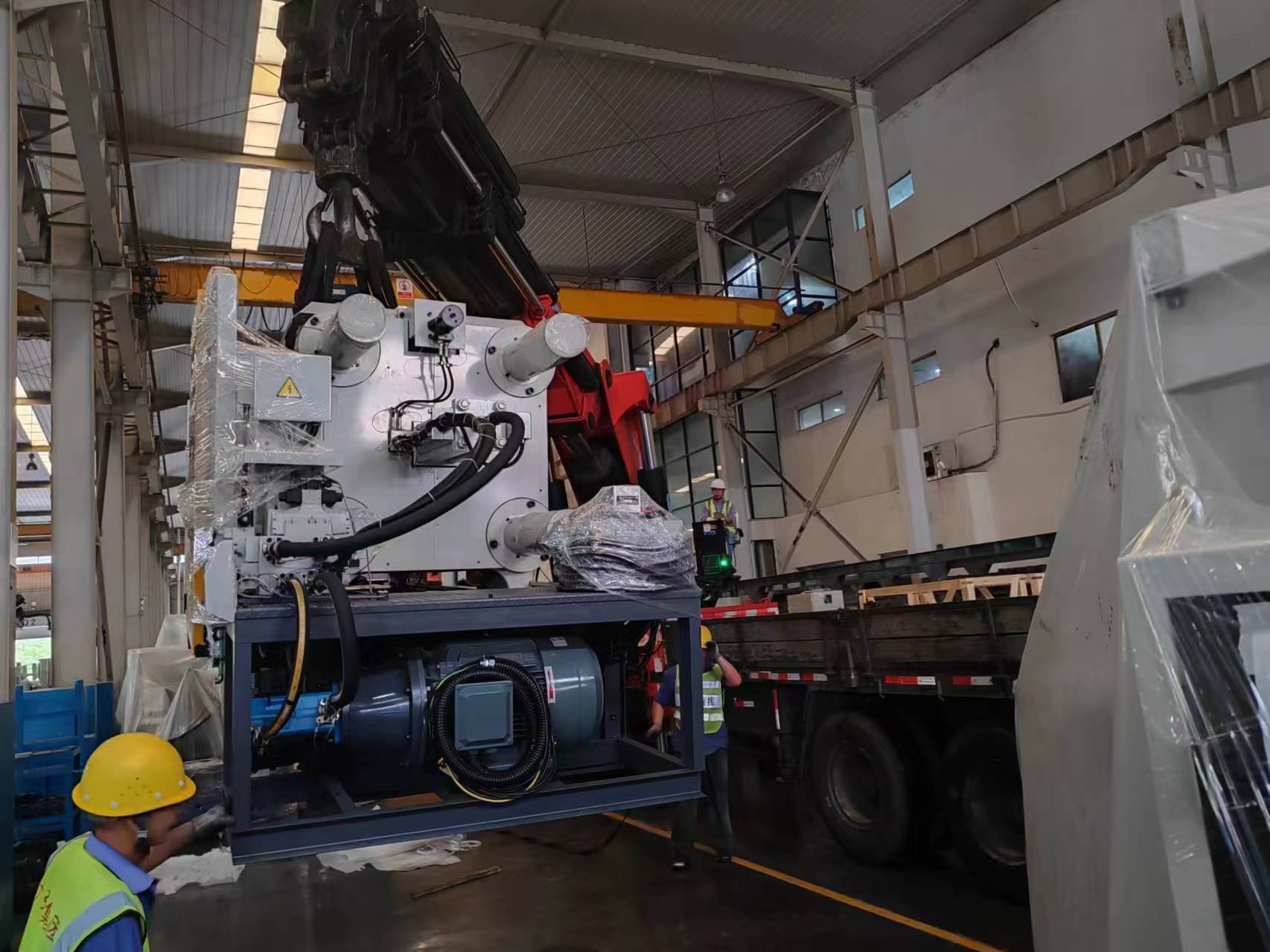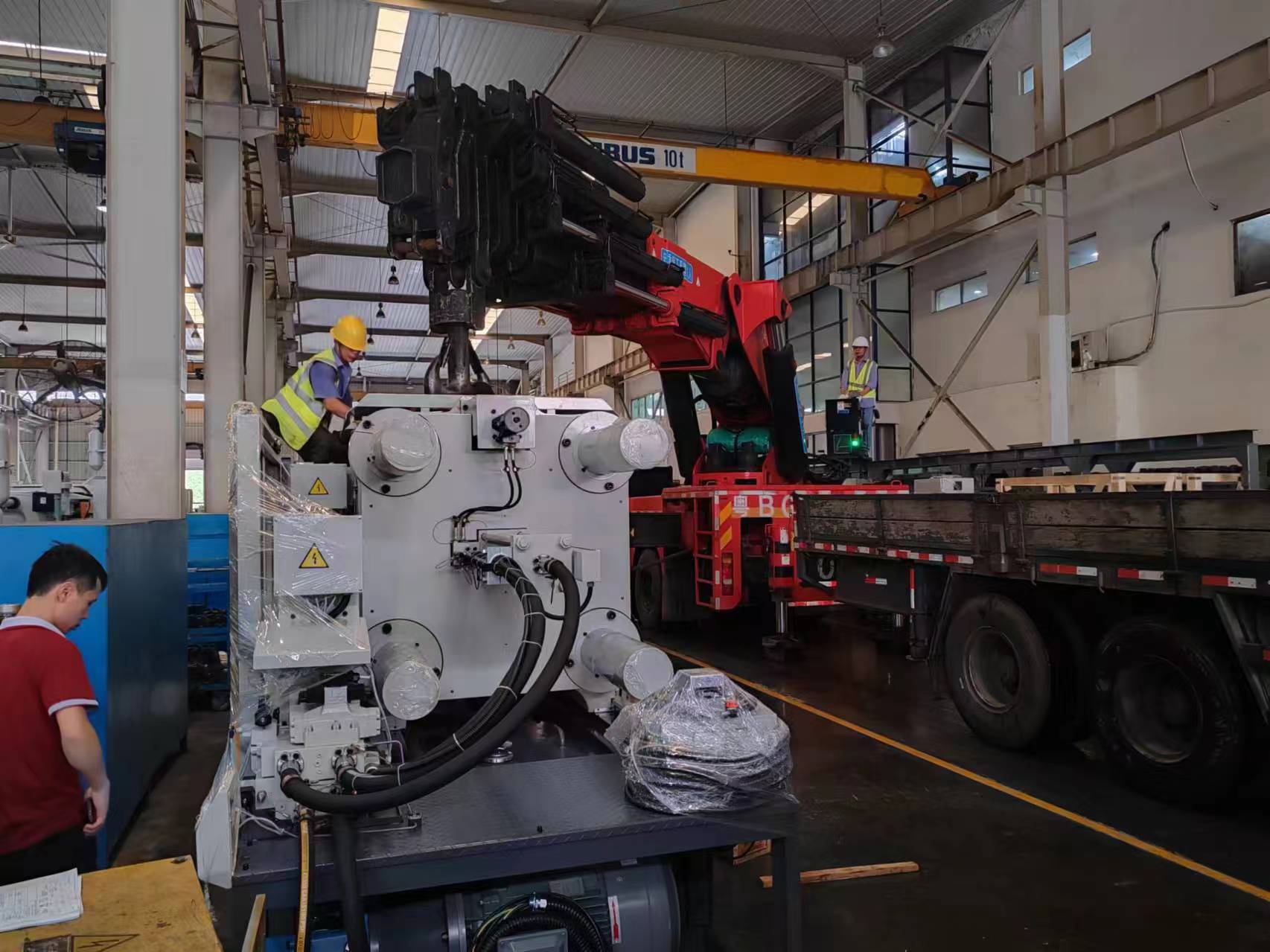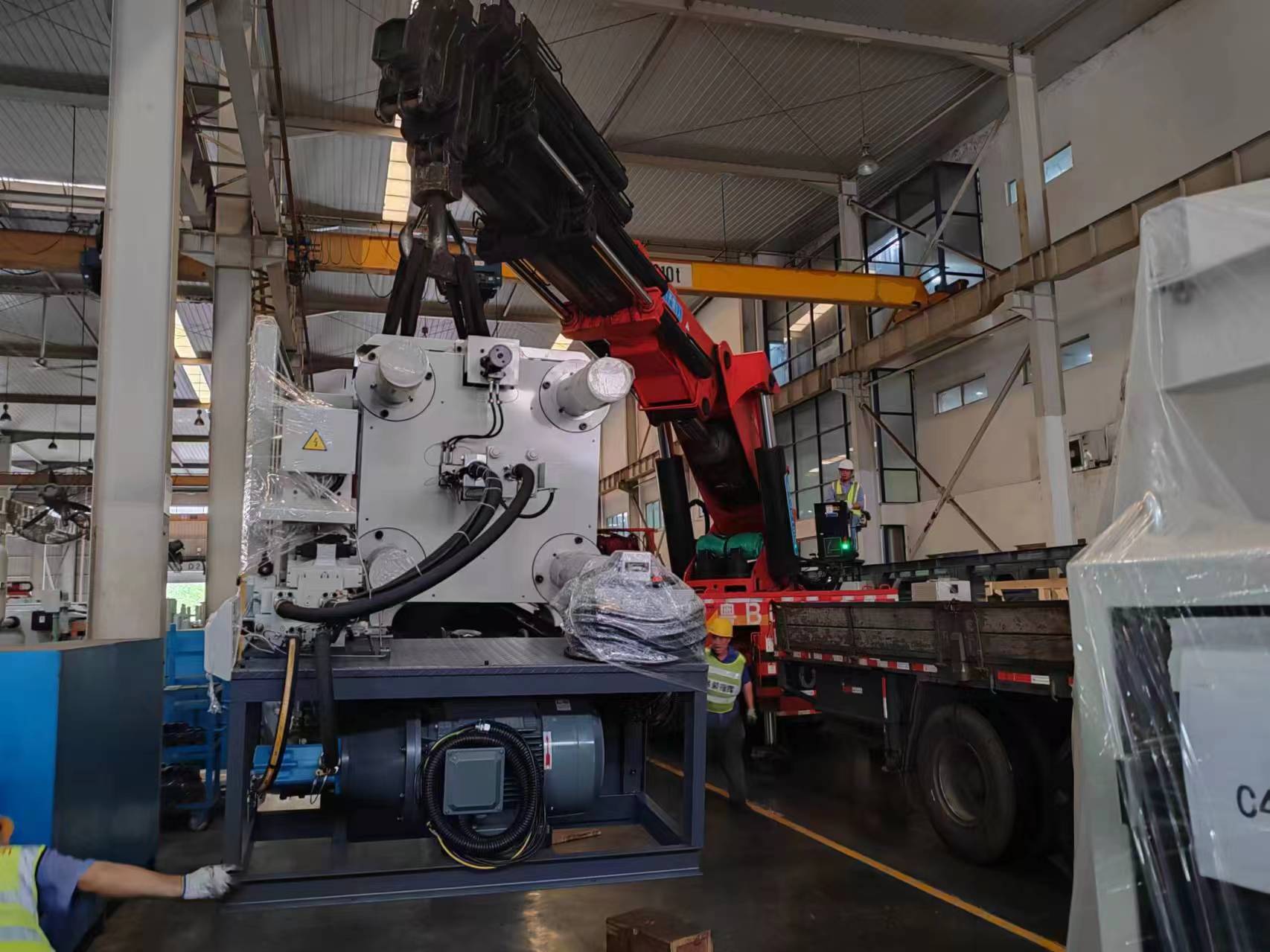How to Get the Die Machine
LK Die Casting Machine / 2024-07-19 10:00:00
Die machines occupy an important position in modern manufacturing, and they play a vital role in the production of high-quality castings.
Whether it is a die-casting plant or a small workshop, efficient and reliable die machines are needed to achieve production goals.
This article will introduce how to get a die machine in detail, covering a comprehensive guide from the selection of electric die machines to specific
application scenarios.

How to get the electric die machine or how to get the electric d.i.e. machine?
Electric die machines are becoming more and more popular in the manufacturing industry for their high efficiency, precision, and environmental protection.
To get a suitable electric die machine, you need to consider the following aspects:
1. Clear requirements: Determine the specifications and performance parameters of the required die machine according to production requirements.
For example, the production of zinc alloy castings requires the selection of a die machine suitable for zinc alloy metal.
2. Choose brands and suppliers: Choose reputable and reliable brands and suppliers, such as LK and so on, to ensure the performance and after-sales service of the
die machine.
3. Technical support and after-sales service: Electric die machines involve complex technologies and good technical support and after-sales service can
ensure the normal operation and maintenance of the equipment.
4. Price and budget: When choosing a die machine, you need to consider the cost-effectiveness of the equipment comprehensively to ensure that
you get the best equipment within your budget.
Selection of plunger tip for die casting machine
The plunger head of die casting machine is an important part of die casting machine, and its performance directly affects the quality
of castings.
The following points should be noted when choosing a suitable plunger head:
1. Material selection: The plunger head is usually made of high-strength and wear-resistant materials, such as chromium alloy, tungsten steel, etc.,
and can be used for a long time under high temperatures and high pressure environments.
2. Size and design: Select the appropriate plunger head size and design according to the specifications of the die casting machine to ensure that
the pressure can be evenly distributed during the casting process to avoid casting defects.

Supplier selection: Choose a reliable die cast factory like LK to ensure the quality and after-sales service of the plunger tip.
Selection and cooperation of die casting factory
The die casting plant plays a key role in the production of castings.
The following points should be considered when choosing a suitable die casting factory:
1. Equipment and technical level: Choose a die casting plant with advanced equipment and technology to ensure the quality and production efficiency
of castings.
2. Production capacity and experience: Evaluate the production capacity and experience of the die casting plant to ensure that it can complete the
production tasks on time and with quality.
3. Cooperation model and contract terms: clarify the cooperation model and contract terms to ensure the rights and interests of both parties and
the smooth progress of cooperation.
Application of zinc alloy and zinc alloy metal
Zinc alloy metal is widely used in die casting, and it has the advantages of high strength, good fluidity, and corrosion resistance. Commonly
used zinc alloys including ZAMAK 3, Zamak 5, etc., which are suitable for the production of various high-precision parts.
Benefits of recycling aluminium or advantages of recycling aluminium
1. Aluminum is a recyclable metal. Recycling aluminum has the following major benefits:
2. Energy saving: Recycling aluminum saves about 95% of energy compared to producing original aluminum.
3. Reduce emissions: The carbon emissions in the recycling process are significantly lower than those in the production of the original
aluminum, which can effectively reduce environmental pollution.
4. Reduce costs: The cost of recycled aluminum is lower than that
of original aluminum, which can reduce production costs and
improve economic benefits.
Aluminum die casting design guide
The aluminum die casting design guide provides an important reference for the design of aluminum alloy castings, mainly including the
following:
1. Design principles: Follow the principles of simplified design, reducing complex structures, and optimizing the pouring system to improve casting
quality and production efficiency.
2. Material selection: Choose suitable aluminum alloy materials, such as al 413, to ensure that the castings have excellent mechanical properties
and corrosion resistance.
3. Surface treatment: According to the use environment and requirements of the castings, choose suitable surface treatment processes, such as
chromate treatment, to improve the surface quality and corrosion resistance of the castings.
Setting and management of casting room
The casting room is the main place for casting production, and its setting and management directly affect the production efficiency and
casting quality.
The following points should be noted in the setting and management of the casting room:
1.Spatial layout: Reasonably plan the spatial layout of the casting room to ensure smooth connection between each process and reduce logistics
and time waste in the production process.
2. Environmental control: Strictly control the temperature, humidity and ventilation of the casting room to ensure the stability of the production
environment and avoid the influence of environmental factors on the quality of castings.
3. Equipment maintenance: Regularly maintain and maintain the casting equipment to ensure its normal operation, and improve production efficiency and
equipment life.

The difference between aluminium alloy die casting and cold chamber die casting
Aluminum die casters and cold die casting chamber are two common casting processes, which differ in application scenarios and process flows.
1. Aluminum die casting:
Application scenario: Suitable for the production of high-precision and high-strength aluminum alloy castings, such as automotive parts, electronic
product housings, etc.
2. Process flow: The molten aluminum alloy is injected into the mold of the die casting machine, formed under high pressure, and formed into castings
after cooling.
Cold chamber die casting:
Application scenario: Suitable for the production of large-size and complex structure castings, such as mechanical parts, aerospace parts, etc.
Process flow: The molten metal is poured into the injection barrel of the cold chamber die casting machine, injected into the mold under high pressure,
and formed into castings after cooling.
Comparison of high casting and investment casting
1. High-pressure casting and investment casting are two commonly used casting processes, which differ in application fields and process characteristics.
High-pressure casting:
2. Application field: Suitable for the production of high-strength and high-precision metal castings, such as automotive parts, electronic product
housings, etc.
3. Process characteristics: The molten metal is injected into the mold under high pressure, and the casting is formed after cooling, with high production
efficiency and good casting quality.
Investment casting:
1. Application areas: Suitable for the production of complex-shaped, high-precision metal castings, such as aerospace parts, medical devices, etc.
2. Process characteristics: By making a wax mold, the molten metal is injected into the wax mold, and the casting is formed after cooling, which can
achieve precision casting of complex shapes.
Application and advantages of aluminum alloy castings
Aluminum alloy castings are widely used in automobiles, aerospace, electronics, electrical appliances, and other fields, and have the
following advantages:
1. High strength: Aluminum alloy has good mechanical properties and can withstand large loads and impacts.
2. Lightweight: Aluminum alloy has a low density and is lighter than traditional steel materials, suitable for application scenarios that require
weight reduction.
3. Corrosion resistance: Aluminum alloy has excellent corrosion resistance and can be used for a long time in harsh environments.
4. Processability: Aluminum alloy is easy to process and form, and can realize the manufacture of complex structures and precision parts.
Advantages of nickel-free castings
1. Nickel free castings are gradually gaining attention in modern manufacturing, and have the following advantages:
2. Environmental protection: Nickel-free castings do not contain nickel elements, which reduces pollution to the environment and harm to the
human body.
3. Corrosion resistance: Nickel-free castings have good corrosion resistance and are suitable for various harsh environments.
4. Low cost: The production cost of nickel-free castings is low, which can reduce the overall production cost and improve economic benefits.
Application of AL 413 aluminum alloy
AL 413 is a commonly used aluminum alloy material with excellent mechanical properties and corrosion resistance. It is widely used in automobiles,
aerospace, electronics, and other fields.
Application scenarios:
1. Automotive parts: such as engine housings, gearbox housings, etc., with the advantages of high strength and light weight.
2. Aerospace: such as aircraft structural parts, instrument panel housings, etc., with good corrosion resistance and mechanical properties.
3. Electronic products: such as mobile phone housings, laptop housings, etc., with lightweight and good conductive properties.
For more info, you can refer to: https://www.youtube.com/shorts/JLX410QV_kw
Contact LK Egypt to learn more info about the die-casting machine
LKAGENT OFFICE DCM
Address: Industry Zone, South of Port Said Kebly, Egypt
https://www.zazdiecasting.com/
Phone/WhatsApp/Wechat: +86 13598704163
Mobile: +20 101 304 3317 +20 150 181 8310
Email: jack@zazmae.com ahmedmahmoud@zazmae.com
#die cast tooling
#trivalent chromate
#rapid prototype casting
#a360 aluminum
#aluminum caster
#aluminum prototype
#ideal 55 slider parts
#density of aluminum kg/mm3
#magnesium sheet metal
#parts of a metal gate
#subcontracting of screw machining for the luxury sector
#wall aluminum
#die casting tooling
#tooling for die casting
#density of aluminium in kg mm3
#clear chromate
#es casting metals
#gating material
#prototype aluminum
#sigma castings
#subcontracting of screw-machining for household appliances
#we squeeze to please machine
#aluminium gravity die casting
#aluminum part
#aluminum rapid prototyping
#nickel casting
#plunger tip for die casting machine
#rapid prototyping aluminium
OTHER CONTENT
-

2024-09-19 14:16:15 LK Cold Chamber Die Casting Machine DCC900 Locking Force: 9000KN Die Height: 400-1000mm Space Between Tie Bars: 930x930mm Shot Weight: 13.5Kg Casting Area Max:2250c㎡
More -

2024-09-19 14:11:06 LK Cold Chamber Die Casting Machine DCC280 Locking Force: 2800KN Die Height: 250-650mm Space Between Tie Bars: 560x560mm Shot Weight: 2.9Kg Casting Area Max:700c㎡
More -

2024-09-19 10:23:07 LK Cold Chamber Die Casting Machine DCC580 Locking Force: 5000KN Die Heigh: 350-850mm Space Between Tie Bars: 760x760mm Shot Weight: 6.9Kg Casting Area Max:1250c㎡
More -

2024-09-19 10:11:20 LK Cold Chamber Die Casting Machine DCC400 Locking Force: 4000KN Die Height: 300-700mm Space Between Tie Bars: 669x669mm Shot Weight: 4.7Kg Casting Area Max:1000c㎡
More

